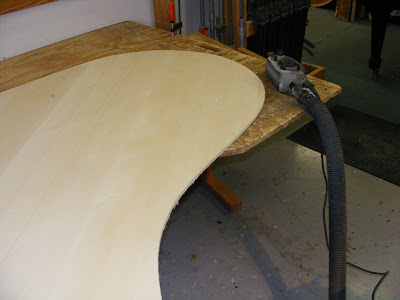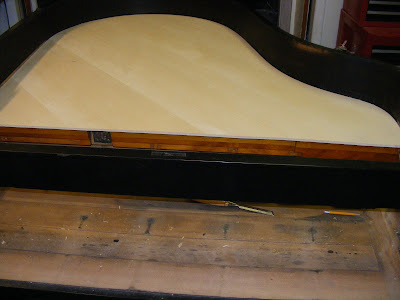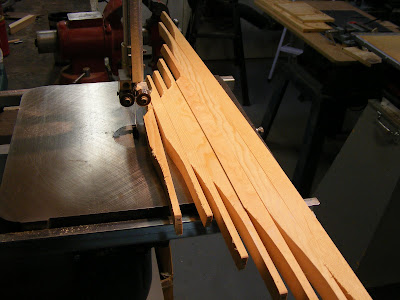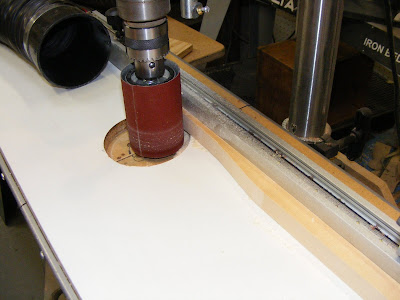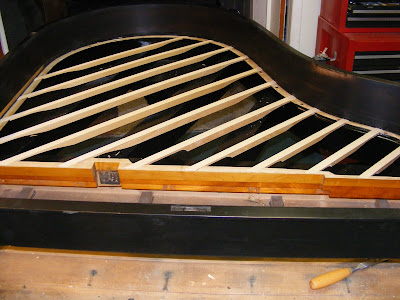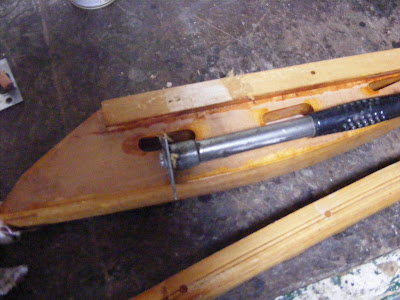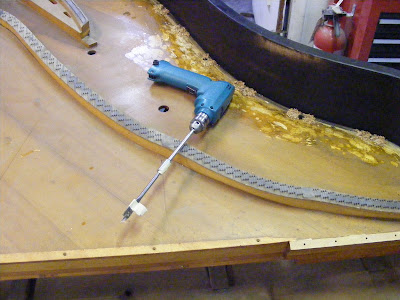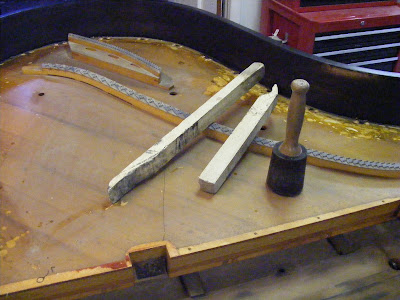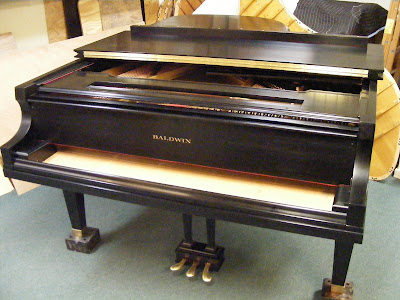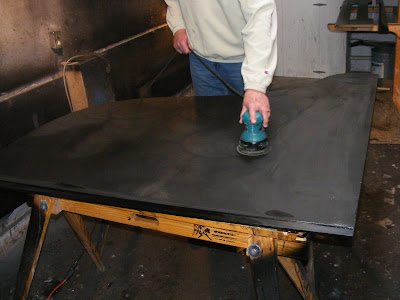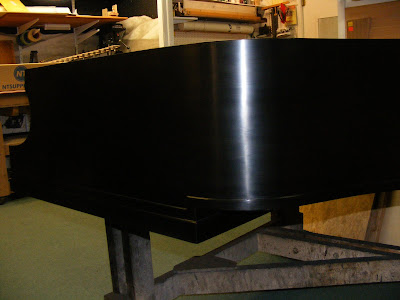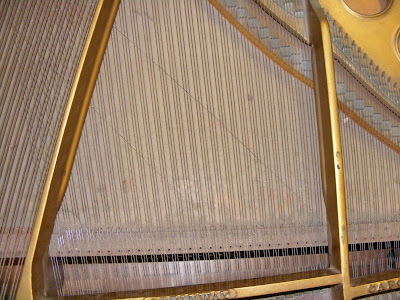


We begin the bridge cap replacement by removing the old bridge pins. This is done by clamping on the old pin with a vise grip and pulling it out with a rotating motion. After the bridge pins have been removed, the next step is to make accurate patterns that will be used to relocate the bridge pins on the new bridge cap. I use .030" thick polycarbonate sheet material for my pattern material. It is ideal because it is clear, and is easy to cut and drill. We begin making the pattern by tracing the contour of the bridge onto the sheet, and then cutting the sheet to make pieces to place on top of the bridge. The blank pattern is taped into place, after which the drill press is used to drill indexing holes about every 9" through the pattern material, and completely through the bridge body. With the indexing pins in place, an awl is used to press a dimple into the pattern directly over the bridge pin holes. We then use a drill to drill a hole through the pattern into the vacant bridge pin hole. The result is a very accurate pattern that will be used to layout the new bridge cap. After the patterns are completed, the old caps are removed with a bandsaw.


